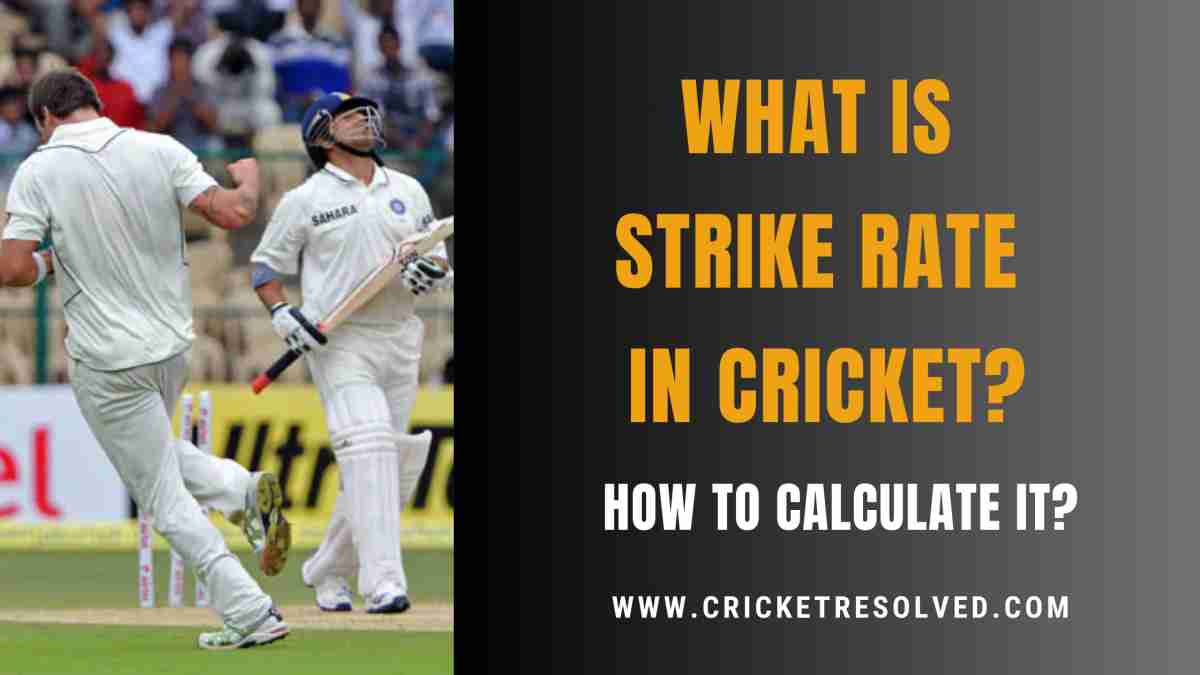
Since cricket is a technical sport, statistics are frequently used to determine the importance of a bowler or a batsman. Average and strike rate statistics typically provide a fairly clear picture of cricketers’ careers, and they are most frequently utilised.
Batting and bowling strike rates are both relatively recent statistics in cricket, having been developed following the introduction of One Day International cricket roughly five decades ago.
What is the Batting Strike Rate in cricket?
Powerful batters who like to hit big shots and score runs typically have a higher strike rate. It’s also worth noting that the batting strike rate is set considerably differently in Tests and limited overs cricket (ODI and T20I) because it’s difficult to score runs in a Test match.
In Test cricket, a batsman’s skill and temperament are usually put to the test. They usually have to be calm and face a number of balls before trying to make strokes. Some batters, like Virender Sehwag, Brendon McCullum, and Rishabh Pant, are not afraid to do things their own way, even in Test cricket, and they score runs quickly.
In ODI and T20I cricket, batters whose strike rates are higher are more valuable. This factor is also used to measure a batter’s ability to score runs against different types of bowling (like spin bowling or fast bowling) to see how comfortable he is against a certain type of bowling.
Now that you understand what a batting strike rate is, let’s look at how to compute it.
How to Calculate the Batting Strike Rate?
Batting strike rate is simply the ratio of runs scored to balls faced, and it is commonly computed over a 100-delivery average. It is a metric that indicates how frequently a batter meets his primary hitting goal, that is, how frequently a batter scores runs.
It is computed by dividing the total number of runs scored in an inning by the number of deliveries faced by a batter. Multiplying this ratio by 100 yields the batting strike rate.
The Formula | Batting SR = (Number of runs scored in an innings) / (Number of balls faced) x 100.
Let’s look at the example:
In a T20 game between Mumbai and Delhi, Player “A” hit 125 runs off 62 balls. Here, we get 2.01 by dividing 125 runs by 62 balls faced. When we multiply it by 100, we find that Player “A”‘s strike rate for their innings in the match was 201.61.
What is the Bowling Strike Rate in Cricket?
The bowling strike rate is another important number that tells us how well a bowler is doing, especially in the longer formats. The strike rate of a bowler is the average number of balls it takes to get rid of a batter. For bowlers, a lower strike rate means success because it takes the bowler fewer balls to get rid of the batsman.
In comparison to the batting strike rate, which measures how quickly a batsman scores, the bowling strike rate measures how quickly a bowler can dismiss a batsman.
The bowling strike rate is also very different from the batting strike rate in a big way. The latter is more important in limited-overs cricket than in Tests. While in Test cricket, taking wickets is more important than giving up runs.
On the other hand, bowlers in T20Is and ODIs must keep a good economy rate, which means giving up fewer runs per ball, even if they don’t take many wickets.
How to Calculate the Bowling Strike Rate?
To calculate the bowling strike rate, you need to divide the number of balls a bowler has delivered in an innings by the number of wickets they have taken.
The Formula | Bowling SR = Number of balls bowled / Number of Wickets Taken
Here is one example:
Ravindra Jadeja took two wickets in 14 overs during a Test match between India and New Zealand. Here, we get Jadeja’s bowling strike rate of 42 by dividing the 84 balls bowled by the two wickets taken.
Read Next | How is the Bowling Speed in Cricket Calculated?



Comments (1)
What is Bowling Average in Cricket and How is it Calculated? - Cricket Resolvedsays:
September 14, 2023 at 10:25 am[…] The better a bowler is doing, the lower his or her average is. Along with the economy rate and the strike rate, it is often used to figure out how well a bowler did […]